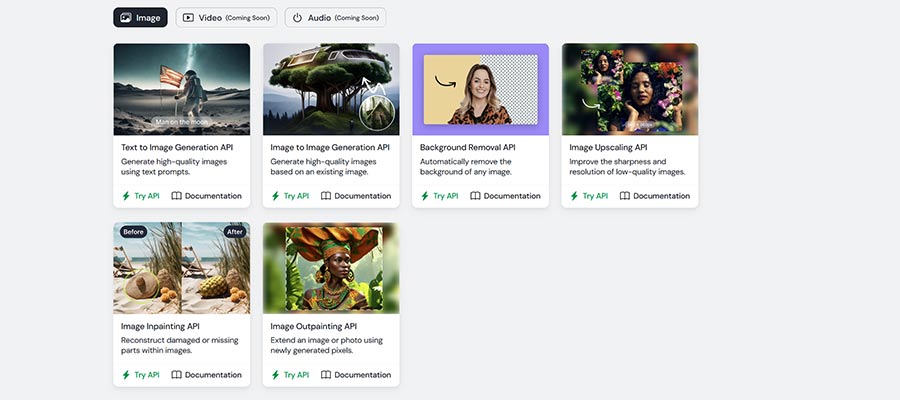…
Stardew Valley 1.6 Patch Drops Today – Here’s What To Expect
Eight years after its official launch, Stardew Valley remains one of the most popular games on the market right now, which is no surprise; whether you’re marrying a neighbor, farming crops, or toiling away in the mines, it’s a game with something for everyone. Its creator, solo developer ConcernedApe, has updated it with plenty of free patches over the years, adding multiplayer, new farm types, and more, but when he moved on to work on his next game, Haunted Chocolatier, the Stardew updates came to an end. That is, until today.
1.6 was announced almost a year ago and promises to add a number of new features, including hats on pets and the highly coveted iridium scythe. Here’s an image of some of the planned updates from last September.

As the release draws closer, ConcernedApe has also teased smaller updates as well, leaving small patch notes on his X account each day. The patch will fix the sword’s downward hitbox, make sure harvesting is the same speed walking right-to-left as left-to-right, and pickles, jellies, juices, and wines will be colored to match their fruit or vegetable of origin. Finally, you can drink mayonnaise. Yeah, you read that right.

Some more updates are included as images below.

 basic), it will yield a sapling with the same quality as its fruit. The higher the quality, the faster the sapling will mature” typeof=”foaf:Image” class=”image-style-body-default”>
basic), it will yield a sapling with the same quality as its fruit. The higher the quality, the faster the sapling will mature” typeof=”foaf:Image” class=”image-style-body-default”>

In addition to the new content, ConcernedApe says he wanted to update the game to make modding “easier and more powerful.” On that note, he recently announced that many existing mods are already updated for the new version, though he recommends trying the patch without mods first. There will also be an option to keep your game in the 1.5.6 patch if you don’t want any of the changes.
Stardew Valley’s 1.6 patch launches later today on PC, with mobile and console updates coming sometime in the future.
Will you be jumping back into Stardew Valley? Let us know in the comments!
Edge 379: A Summary Of Our Series About LLM Reasoning
In 13 issues, this series covered the fundamental concepts, research and tech around reasoning in LLMs….
Poland is Getting Moscow-Reaching Cruise Missiles – Technology Org
Poland will receive a large shipment of American weapons, which will include AIM-9X Sidewinder Block II and AIM-120C-8…
Nvidia Introduced New Generative AI Platform For Humanoid Robots – Technology Org
Nvidia unveiled a comprehensive hardware and software framework at its annual developer conference aimed at advancing humanoid robotics…
NVIDIA unveils Blackwell architecture to power next GenAI wave
NVIDIA has announced its next-generation Blackwell GPU architecture, designed to usher in a new era of accelerated computing and enable organisations to build and run real-time generative AI on trillion-parameter large language models. The Blackwell platform promises up to 25 times lower cost and energy consumption…
Unveiling the Pinnacle Alternatives to BrowserStack for Efficient Software Testing – Technology Org
Ensuring software performs impeccably across various browsers and devices in the ever-evolving digital era is paramount. This is…
LimeWire Developer Brings the Power of AI to Your Apps
Artificial Intelligence (AI) is changing our world. The technology is expanding our capabilities and raising user expectations. And we’re only scratching the surface of what is possible.
Developers are racing to keep up. Many have begun adding AI to their websites and applications. They’re using it to add powerful features like generative media. The ability to create images, audio, and video via these tools is a game changer.
LimeWire Developer is making AI integration easier. This suite of generative AI REST APIs lets you tap into the power of LimeWire AI Studio. It promises quick access to top-notch AI models.
Let’s take a deeper look at LimeWire Developer. We’ll show you how it can bring your creations into the age of AI.

Making Generative AI Easy for Developers
New AI models are coming online all the time. Most have an API for integration. However, they come with learning curves. And using multiple tools means a lot of time spent learning.
LimeWire Developer aims to simplify the process. The service offers access to 10+ generative AI models. Everything is available via a simple REST API interface.
Here’s what makes LimeWire Developer a standout addition to your toolbox:
Built with Developers in Mind
An API is only as good as its infrastructure. LimeWire Developer is both robust and scalable. It can withstand high loads of traffic and scales seamlessly. Response times are lightning-quick.
Ease of use is also a priority. The APIs feature a REST request and response structure. They work with any programming language. And you’ll find in-depth documentation.
The idea is to get you up and running quickly – all within an easy-to-understand interface.

Access to the AI Models You Want
LimeWire Developer features top AI models to fit your needs. Whether you want to create images, audio, or video – there’s something for everyone.
For example, lots of apps are adding image-generation capabilities. LimeWire Developer works with the top names in the game. Models from BlueWillow, DALL·E, Google AI Imagen, and Stable Diffusion are available.
These models cover a range of functions. You can generate images via a text prompt or based on existing images. There are also APIs for upscaling images and removing backgrounds. It’s also possible to reconstruct or expand them.
Audio and video APIs are in the works and will be released soon. Check out LimeWire Developer’s Discord server for more details as they become available.

Budget Friendly and Well-Supported
You don’t need to spend big to take advantage of AI models. Nor will you be left to fend for yourself. LimeWire Developer has you covered.
Their support staff can help you get started and answer your questions. They can also provide custom quotes and solutions to fit your project.
Plus, you’ll find packages for every budget level. Each has generous API limits and access to support. There’s even a free plan you can experiment with.
Get Started with LimeWire Developer for Free
Are you looking to add generative AI to your website or application? LimeWire Developer is worth a look. The service offers plenty of options under a singular umbrella. And its focus on developers means it’s powerful and easy to use.
What’s more, new AI models are coming. Transformative audio and video tools will be a few keystrokes away. You’ll always be at the cutting edge of this technology.
Why not give it a try? Sign up for your free LimeWire Developer key and start creating!
Related Topics
Smaller, more powerful stretchable electronics for wearables and implantables – Technology Org
Small wearable or implantable electronics could help monitor our health, diagnose diseases, and provide opportunities for improved, autonomous…
Waist-to-height ratio detects fat obesity in children and adolescents significantly better than BMI, study finds – Technology Org
An inexpensive measure of obesity in children and adolescents that could replace body mass index (BMI) has been…
